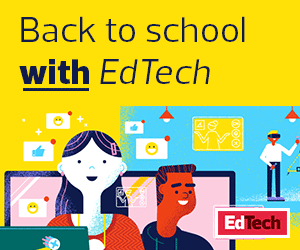The coronavirus pandemic and economic recession also threaten students’ basic needs, which must be addressed so they can focus on learning. Teachers spent a lot of time this spring connecting families with social services, whether they were struggling with job loss, food scarcity or risk of eviction.
Digital equity is yet another challenge: Students who do not own a device or lack home internet access lose valuable instruction time — an ongoing reality for students across the country. Making things worse: The Associated Press has reported a nationwide shortage of laptops, which are a crucial tool for remote learning.
For the youngest students, there is particular urgency to resume instruction: Crucial literacy development happens during grades K–3, and if reading proficiency isn’t achieved by third grade, students are less likely to graduate from high school.
Lessons Learned Inform Virtual Teaching for the New School Year
Many districts are implementing remote learning for the new school year.
Michelle Person, who started a new job this summer as an elementary principal at Yellow Springs Schools in Ohio, says that after the chaotic spring, she feels better prepared because of what she learned about what works for pre-K–6 students learning online.
“I’m so much more optimistic now that we’ve had time to plan for it,” Person says.
Until there is a COVID-19 vaccine, schools probably will switch between remote instruction and in-person learning but, Person says, “I feel comfortable that we’ll do it better now.”
These hard-won lessons from the spring can help elementary teachers prepare for continued remote learning.
1. Pick One Platform and Master It
Person advises teachers to “decide on one platform and become an expert in that platform. Train your parents on that platform. Train your teachers on that platform. Once you become experts, you can always supplement later.”
In the Cleveland Metropolitan School District, where Person worked through the end of the 2019-2020 school year, elementary school staff used at least five different digital platforms this spring. Juggling multiple logins frustrated students and parents.
This year, the district — which already uses Office 365 — is aiming to simplify and train everyone on the Microsoft Teams app, Person says.
DISCOVER: Learn about the latest Microsoft Teams features for remote learning.
At The Shipley School, located in Bryn Mawr, Pa., older students typically used an existing online learning management system prior to the pandemic. Staff at the small private school hustled to virtual professional development and built an “online classroom presence” so students in pre-K through fifth grade could collaborate, says Debra Finger, Shipley’s assistant director of educational technology. They prioritized Screencastify, Flipgrid and Padlet.
2. Meet Students Where They Are
Student learning loss is expected to be higher than average this year due to the loss of spring instruction time. Teachers need to be nimble as they differentiate and deliver instruction based on students’ age, developmental needs and comfort with technology. For example, Robin Stieglitz, a bilingual second grade teacher at Washington Heights Expeditionary Learning School in New York City, and a co-teacher produced 15-minute instructional videos for their students in the spring. They quickly realized students weren’t staying engaged, so they switched to videos with a maximum length of seven minutes and received positive feedback from parents.
LEARN MORE: How can audiovisual tools help teachers create engaging learning experiences?
For Emmons, the ESL teacher in Massachusetts, small synchronous video calls were often more successful for her elementary students than large-group, lecture-style lessons. When one student became overwhelmed by loud Google Meet sessions, her teachers started an “art club” for that student and three of her friends. On each video call, the children would discuss a different art style and return the following week to show off art they had created while offline.
Student expectations should also be explicitly stated, teachers say. Person suggests teachers devise a simple weekly schedule, then make sure students know exactly when they’re expected to be online, when assignments are due and how to get help.
READ MORE: Here's why establishing routines is key to improving online learning.
Specifying learning targets for live online instruction is especially important, says Stieglitz, who also teaches special education.
“If you have an hour and a half throughout your whole day for all teachers in your grade to teach, that better be the most important learning that you’re doing that day,” she says.
3. Prioritize Building Relationships with Families
Consistent, clear and compassionate communication with parents is important under normal circumstances. It’s imperative for remote learning during a pandemic, experts say. Stronger connections with families equal stronger student engagement online.
Stieglitz and her colleagues are planning virtual “home visits” to get to know each student and their family before school starts because they don’t know when they will meet in person.
“For us to meet their families on Zoom before we even start will help us build rapport,” she says. It also breaks the ice before any potentially awkward calls home for disciplinary reasons, such as a student’s absence from an online lesson.
Engaging consistently with families throughout the year is just as critical. Whenever possible, invite families to collaborate on the student’s learning process, Emmons suggests. That could involve encouraging parents of young students to sit in on video calls so they understand what their child is working on and how they can help.
“Relationships with families are just the most valuable thing you can have right now, because they really are leading the instruction,” she says.
MORE ON EDTECH: Get expert tips and insights to help you navigate back to school this year.











